Reports of Hindu families leaving Muslim-majority areas in Jaipur, including Ramganj, Subhash Chowk, Ghat Gate, Ram Nagar, Char Darwaza, and Eidgah, have sparked concerns over the rising communal divide in the city.
These areas, once a melting pot, are now turning into hotbeds of tension. Accusations of harassment, forceful sale of properties, and increasing social pressure have made this demographic and socio-economic shift.
This article delves into these issues in detail and focuses on the allegations, changes in demographics, and the greater implications of these developments.
The Allegations: Harassment and Coercion
Many Hindu families feel harassed and coerced in these areas. Some of the main concerns include:
Harassment of Women: Several Hindu families reported that women and girls were harassed in these neighborhoods, limiting their freedom of movement. These incidents have created an atmosphere of insecurity, and most families have shifted out of these areas.
Economic and Social Pressure: Hindu residents feel that they are compelled to sell their properties for less than the market price to Muslim buyers. The issue of posters also has heightened the fear of economic isolation as well as harassment.
Economic and social pressure has already led to the migration of Hindu families from these neighbourhoods.
While these claims are disputed by some, they have led to a general feeling of insecurity and unease among Hindu residents, who have therefore decided to move out.
Demographic Changes: A Numerical Perspective
During the last two decades, these areas have undergone a lot of demographic changes. The balance of population has been changed by higher Muslim birth rates, in-migration, and the emigration of Hindu families. Here is a statistical overview of these demographic changes:
| Area | Muslim Population Growth (%) | Hindu Population Decline (%) |
| Ramganj | 63.3% | 40.3% |
| Ghat Gate | 54.2% | 23.9% |
| Ram Nagar | 49.3% | 29.3% |
| Char Darwaza | 60.9% | 41.1% |
| Eidgah | 61.2% | 50.3% |
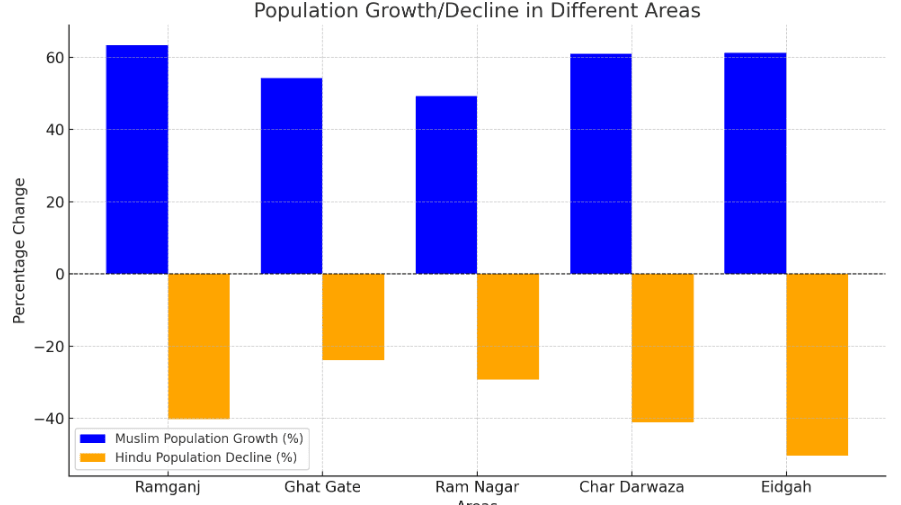
This data shows the extensive demographic changes in these areas; Muslim populations are growing at a faster rate, and Hindu populations are shrinking. This trend has given rise to serious concerns about the future social fabric of these neighborhoods.
Trends in Property Sales: Hindus Selling and Muslims Buying
This can be inferred from the changes observed in property transactions. Hindu families feel an economic and social strain as more of them sell off their homes, while the properties are bought by the Muslims. The following table outlines the trends in selling these properties:
| Area | Hindu Families Selling Homes (%) | Muslim Families Buying Homes (%) |
| Ramganj | 43.6% | 56.4% |
| Subhash Chowk | 34.4% | 65.6% |
| Ghat Gate | 32.3% | 55.5% |
| Ram Nagar | 27.8% | 49% |
| Char Darwaza | 55.4% | 60.1% |
| Eidgah | 60% | 68.2% |
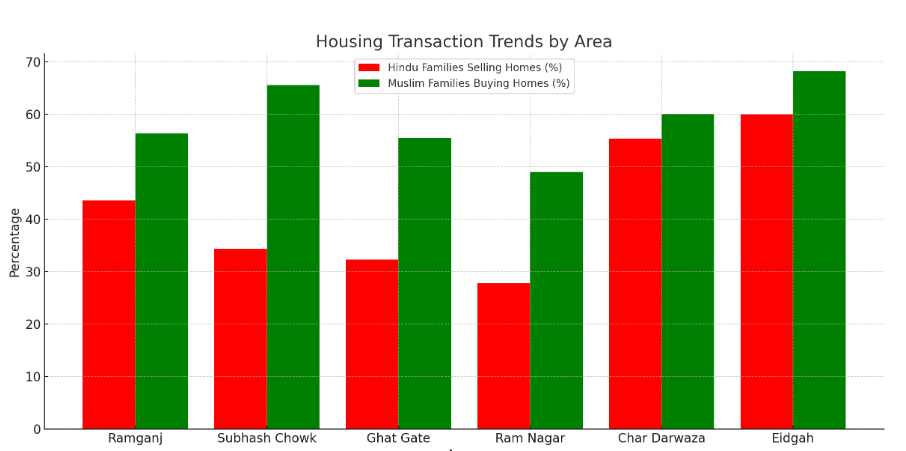
This is indicative of the trend among the Hindu families selling out to the Muslim families as this demographic shift is underway.
Trends in Business Ownership: Hindu Businesses Declining and Muslim Businesses Growing
Besides the changing property ownership, business ownership also witnessed a marked change. The number of Hindu-owned businesses in these areas was declining, while Muslim-owned businesses were on the rise. The following table gives an overview of this change:
| Area | Hindu Businesses Declining (%) | Muslim Businesses Increasing (%) |
|---|---|---|
| Ramganj | 41.2% | 58.1% |
| Subhash Chowk | 35.5% | 50% |
| Ghat Gate | 29.2% | 54.9% |
| Ram Nagar | 25% | 51% |
| Char Darwaza | 41% | 60.1% |
| Eidgah | 53% | 65% |
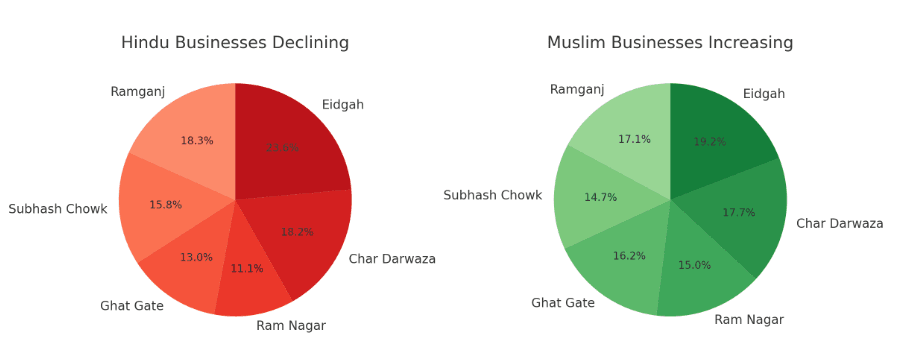
A sharp decline in Hindu businesses is reported while Muslim businesses are surging in these areas. Often, this is attributed to the economic pressures on the Hindu business owners and the dominant trend of the Muslim community in these neighborhoods.
Communal Tensions: Main Events
The demographic and socio-economic changes have added fuel to the communal tensions in these areas. Among these main events, the following can be listed:
Riots and Violence: A case of road rage in Subhash Chowk in 2023 became a violent clash between Hindu and Muslim communities. The event deepened mistrust and increased the fear of ongoing communal violence in those areas.
Political Response: Hindu organizations have been very vocal in claiming that the state government is biased. The policies favor minority groups and, thus, create a disbalance in the treatment of different communities.
Groups such as the Jaipur Bachao Sangharsh Samiti have staged protests calling for more equal governance and stricter law enforcement.
These incidents have brought about a growing sense of division between the communities, and it is becoming hard for residents to live peacefully in the same place.
Socio-Economic Factors Pushing Migration
The Hindu families’ migration from these neighborhoods can be attributed to the following socio-economic factors:
Many of the Hindu families claim that the economic pressure to sell the houses at below-market rates compels them to do this, and the main reasons cited are the devaluation of their houses. The inability of the local authorities to provide them with much help has made relocation the most viable option.
Business Problems: Hindu businessmen have complained of losing customers and the viability of their businesses; in some cases, their businesses are boycotted. Many have closed or sold out, which has been a part of the larger phenomenon of migration.
Economic and Psychological Pressures Interact to Cause Departure
The interplay between economic pressures and feelings of insecurity has caused many Hindu families to leave, creating a vicious circle of demographic and social change.
Wider Consequences of Ghettoization
The phenomenon of communal clustering, where one community dominates a particular neighborhood, has much broader societal implications:
It increases polarization: Segregation fosters division and mistrust between communities, which becomes more challenging to bring closer for interfaith dialogue and cooperation. This can eventually lead to increased tensions and conflict.
Economic Impact: The decrease in property values within these neighborhoods reduces investment and business opportunities. This can be a vicious cycle of economic decline, further isolating communities and reducing the overall quality of life in those areas.
Governance Issues: It becomes difficult to manage tensions and ensure safety when neighborhoods become segregated. Local authorities face challenges in maintaining law and order and addressing grievances from different communities.
Possible Solutions
To address these issues and promote greater integration, several steps can be taken:
Improved Law Enforcement: Local authorities must ensure the safety of all residents by addressing claims of harassment, preventing violence, and enforcing property laws to protect residents’ rights.
Community Dialogue: Interfaith initiatives and local leadership can work to bridge the gap between communities, fostering cooperation and understanding. Regular dialogue can help reduce tensions and build trust.
Fair Property Laws: Regulations preventing coerced sales and ensuring transparency in property transactions are essential to protect homeowners from being forced to sell at below-market rates.
Urban Planning: Urban development should focus on creating inclusive neighborhoods, promoting mixed-use development, and integrating different communities. This can reduce segregation and help foster greater social cohesion.
The migration of Hindu families from Muslim-majority areas in Jaipur points to deep-rooted issues related to communal tensions, socio-economic pressures, and shifting demographics.
The allegations of harassment and coercion are disturbing, but they reflect broader societal challenges that need to be addressed.
Greater understanding, fair governance, and opportunities for economic and social integration will help Jaipur work toward a more harmonious and inclusive future.
Local authorities and community leaders should focus on these issues so that the rich cultural diversity of the city is preserved and strengthened for future generations.
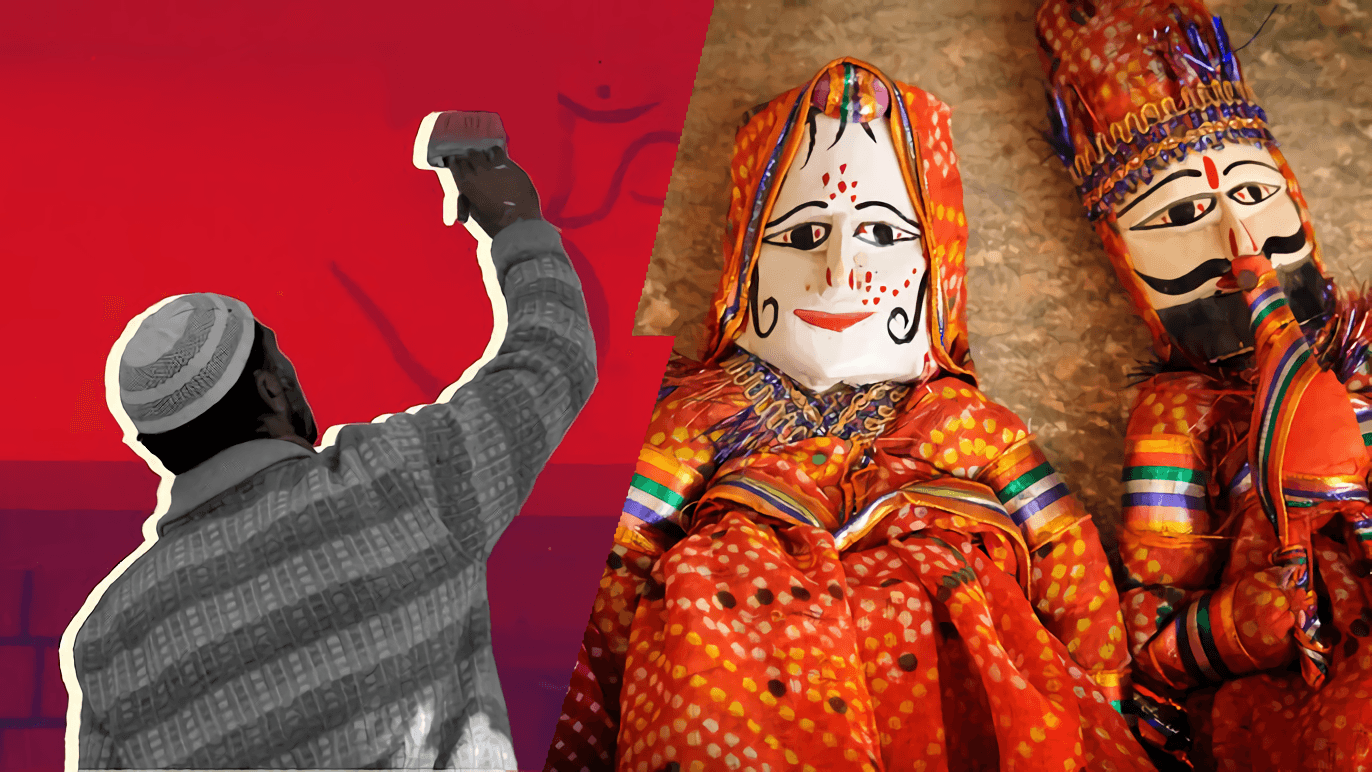



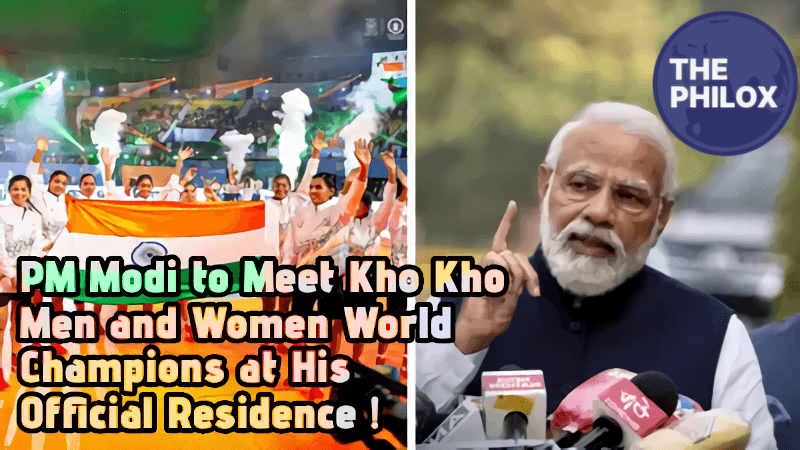
One thought on “Hindus Force to Sell Their Homes in these Muslim Areas in Jaipur”